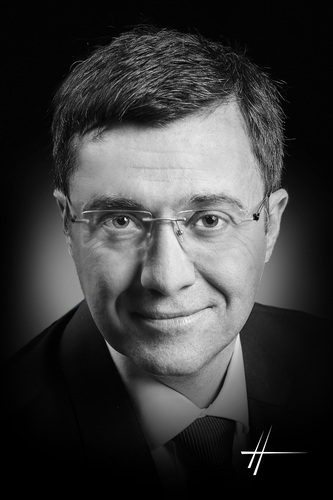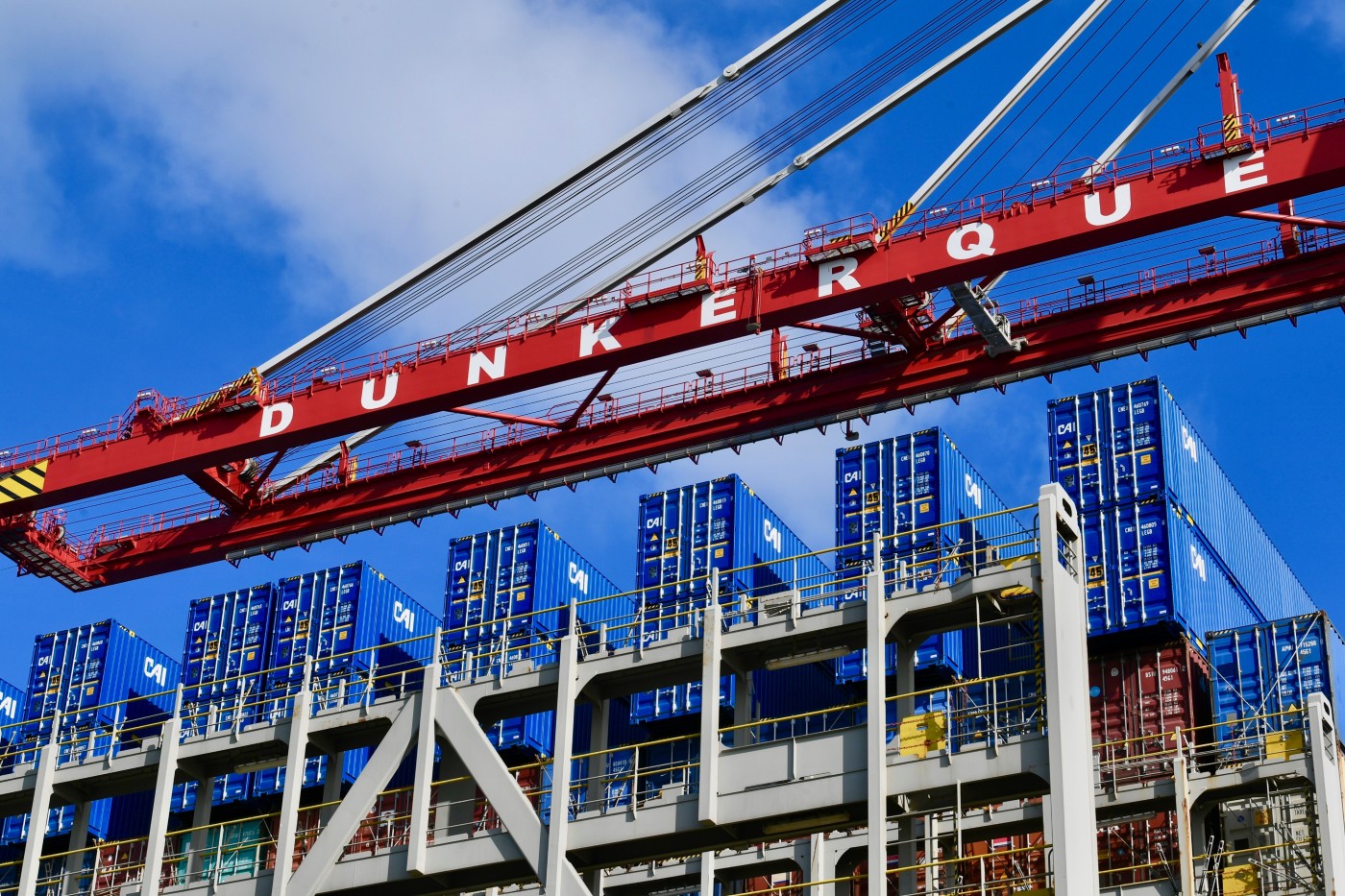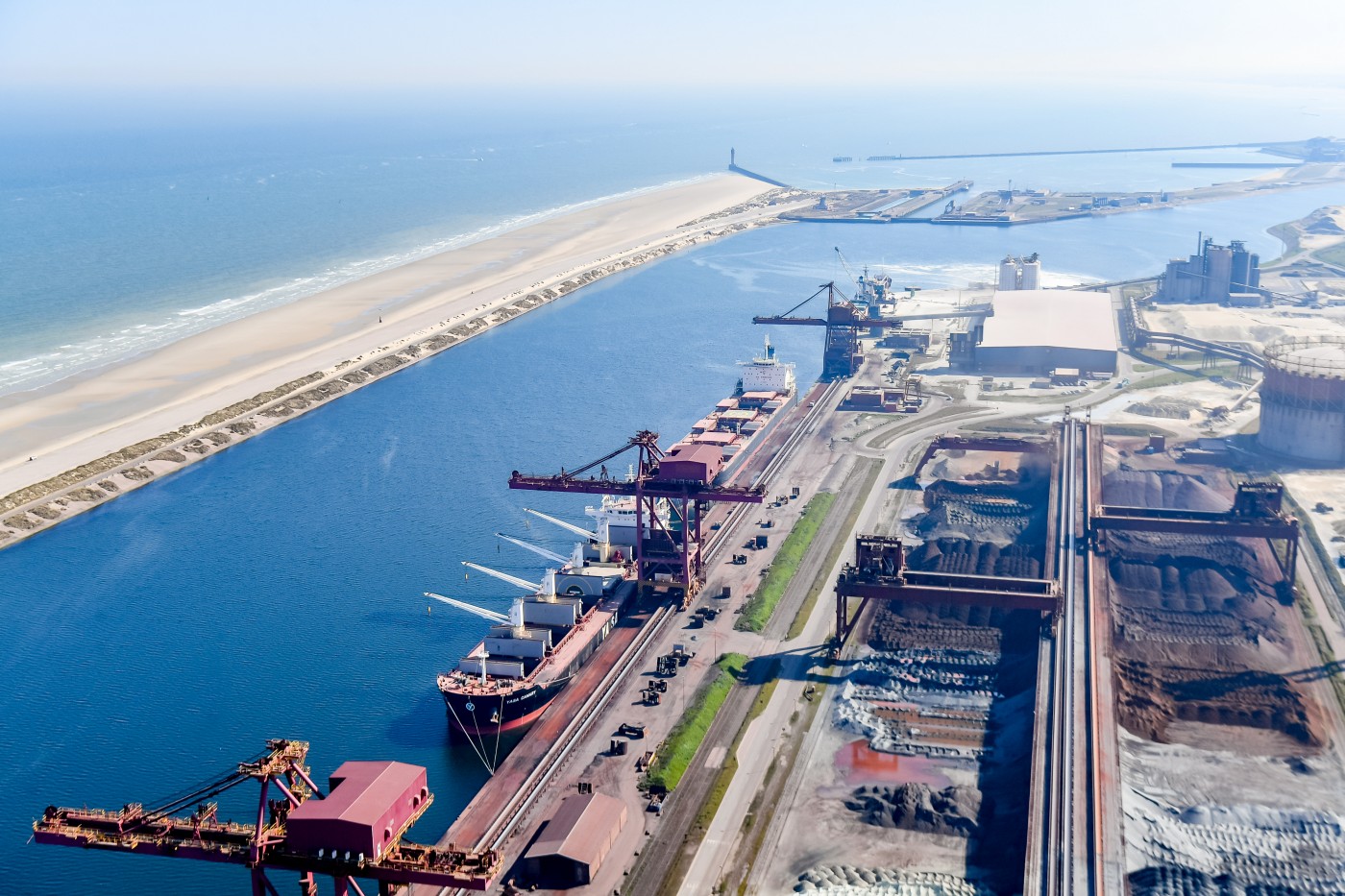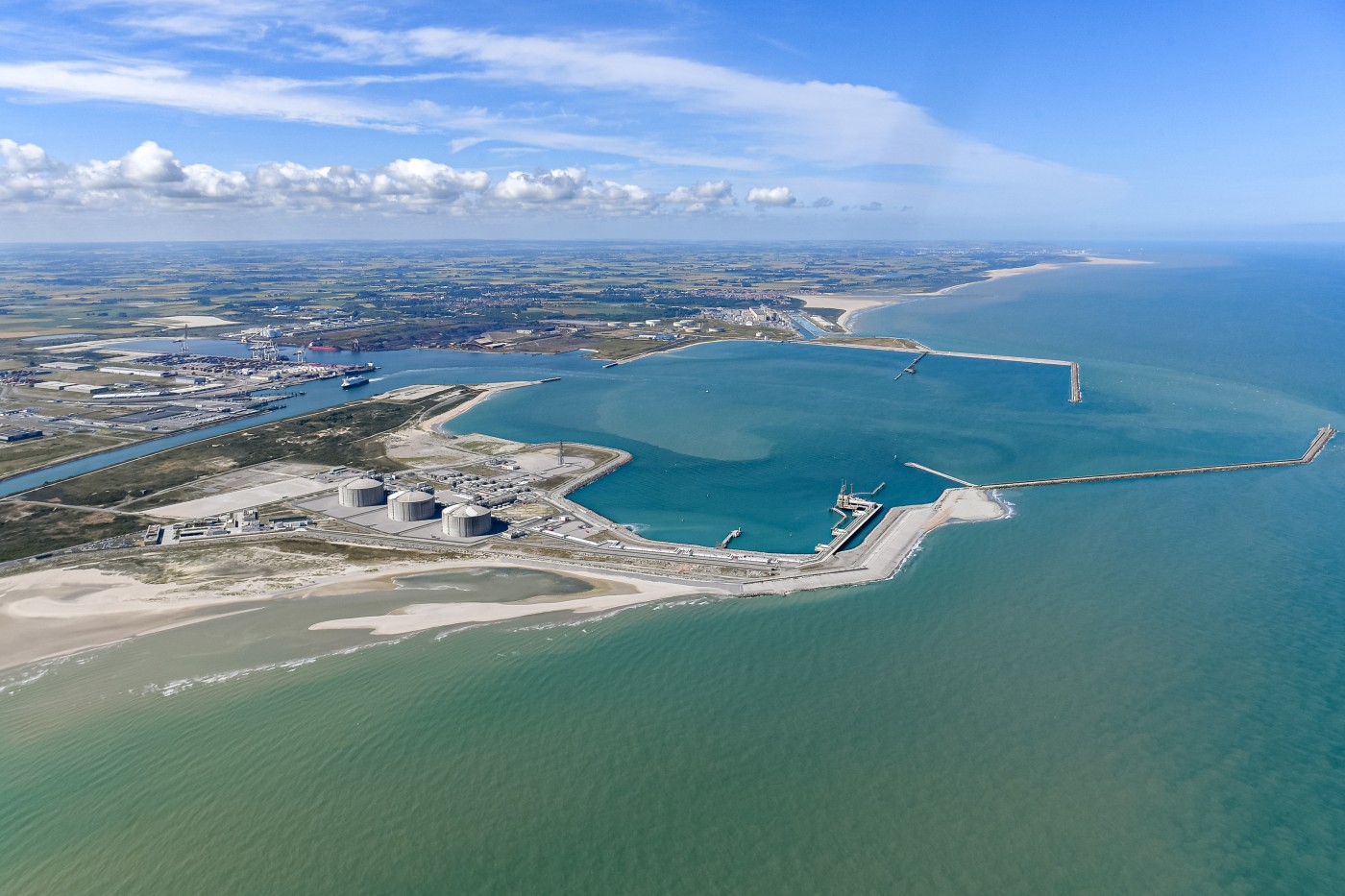30 September 2020
ESPO is sitting this month with Mr. Stéphane Raison, CEO of the Port of Dunkirk. In the following interview, Mr. Raison explains the new economic model that the Port has developed, how the Port is preparing for Brexit, the effects of COVID-19 on the port, the importance of being part of the TEN-T North Sea-Mediterranean Corridor, and much more.

Can you briefly tell us about the Port of Dunkirk? What are its main characteristics and challenges?
The port of Dunkirk is located on the Northern Range and achieved 53 MT traffic in 2019. Since 2013, traffic in the port has increased by nearly 10 MT. Dunkirk is also an integral part of Norlink, the Federation of sea and inland ports in the Hauts-de-France Region. In the last few years, Norlink has become the leading port complex in France, with a maritime traffic of more than 100 MT.
The port’s traffic is diverse, with a significant rise in LNG and container traffic in recent years. Dunkirk is one of the rare ports on the Northern Range that is able to accommodate state-of-the-art container ships without any tidal constraints and on 24/7 basis.
The Port of Dunkirk’s development is also based on its strong industrial complex and the importance of its cross-Channel activity.
In total, the Port of Dunkirk generates an annual added value of around 3.8 billion euros for a total of 33.000 direct, indirect and induced jobs.
The various challenges that Dunkirk will have to face in the coming decades are rather similar to those of other European ports. They are directly linked to the awareness of acting together on global warming. By instituting the principle of carbon neutrality by 2050, the Green Deal will profoundly change all areas of the economy: energy, industry, transport, etc. Ports are at the crossroads of these important changes.
How did you get into maritime transport? How did your career path lead to this position?
I am Chief Engineer and have been Chairman of the Executive Committee of Dunkirk-Port since 25 July 2014. The President of France renewed my duties for a new 5-year mandate.
After starting my career in the administration of equipment in the service of communities from 1995 to 2004, I worked in the maritime and coastal sector. First, for Les Sables d'Olonne as Head of the Maritime and Risks Department. I then joined the Port of Dunkirk in early 2009 as Director of Planning and Environment where I managed the project for the installation of the LNG terminal, which is now fully operational.
After that, I served as Interim President of Grand Port Maritime de Dunkerque (GPMD) from August 2011 to March 2012.
From 2012 to 2014, I led the reform of the port of La Réunion, where I developed the Indian Ocean container hub project, among others. I then went back to Dunkirk as Chairman of the Executive Committee.

What is your vision for the Port of Dunkirk for the next decade?
The inevitable change in the energy mix on a global scale will considerably reduce financial income from oil activity, an activity from which many ports still benefit today. The port of Dunkirk, whose refining activity stopped in 2010, has the advantage of having already laid the foundations for its new economic model.
This new model is based on the development of new energies: LNG, biofuels, offshore wind farms, mass production of green hydrogen, etc. It also centres around the industrial aspect. European industries willing to set up supply schemes limiting greenhouse gas emissions will increasingly choose locations in industrial port zones, which are able to offer them energy that is easy to access, near, competitive and carbon-free. We will of course support them in their ambition according to the principles of circular economy.
The third pillar of our new model focuses on cross-Channel activities. In a context shaped by Brexit and the consequences of the current pandemic, we will continue to do our best to consolidate this activity while promoting the expansion of our Ro-Ro offer to other regions.
Finally, we will need to continue to adapt our port infrastructure to accommodate constantly bigger container ships, if we want to remain competitive in East-West trade in the long term. Our Cap 2020 project, which aims to create a new basin for the development of 4 berths, is foreseen to accommodate next-generation ships over the next decade.
The COVID-19 crisis is having a profound impact on the European economy and society. What has been the impact of the COVID-19 crisis on the Port of Dunkirk? How has the Port prepared itself to guarantee that goods can continue to be handled in the port?
Since 16 March, when the lockdown started in France, the Port of Dunkirk has been functioning with the operations teams working in the field and ensuring smooth operations in the Port. Most of the administrative staff has been working from home, while my management team and I managed the company. Port activity has continued without interruption for all types of ships and goods. We paid particular attention to the steel industry as well as to the cross-Channel activity, most probably the two sectors most affected.
This health crisis has taught us a lot and like any major crisis, we continue to learn to better understand and anticipate the next one. My greatest pride is to have contributed to maintaining all our cross-Channel links with our clients and, in general, to have maintained a permanent connection with all our clients, shipowners, shippers and terminal operators. We have noticed a decrease in our tonnages but overall, our activities have gradually resumed, with the exception of passenger traffic of course.
.jpg) ® Studio Mallevaey
® Studio Mallevaey
The negotiations on a future relationship between the EU and the UK are entering their final phase. The EU and the UK have until the end of the year to come up with an agreement, or the much-feared no-deal scenario will become reality. How has the Port of Dunkirk prepared itself for Brexit? What would be the main challenges in case of a no-deal scenario for the Port? Do you have a message for the negotiators?
Cross-Channel activity and the Dunkirk-Dover link is a service that has never experienced any flaw or interruption since it was set up in 1998. DFDS Seaways lines up three vessels on the link, thereby ensuring a departure every two hours. Since 23 June 2016 (when the Brexit referendum took place in the UK), we have been working with our clients and all State services, in order to prepare for Brexit and its consequences on the business in the port. The 3 major terminal operators, Getlink (Channel Tunnel Operator), the Port of Calais and the Port of Dunkirk, provide the majority of trade between continental Europe, the United Kingdom and Ireland. Exceptional measures have been taken to prepare for post-Brexit, whatever the outcome may be. The Port of Dunkirk is a transoceanic port and its economic players have expertise in international trade. There are innovative measures in the field of customs clearance and veterinary or phytosanitary controls of goods . Under the leadership of the Prefect of the Region, everything was put in place to prepare for Brexit. The infrastructure is now ready: waiting and pre-boarding parking, border inspection post buildings, etc. Our staff is trained and on standby.
The Port of Dunkirk is therefore clearly “Brexit-ready”.
In order to get goods to the desired destinations, good hinterland connections to the port are of paramount importance. Can you briefly describe how the Port of Dunkirk is connected to its hinterland?
The issue of land service to the port is of course central to our strategic thinking. Overall, the port of Dunkirk is the leading multimodal port in France, with a share of so-called “alternative” transport (river, rail and pipe) of around 65%. However, there is still a lot of work in order to promote the progressive decarbonisation of transport chains at all levels. Dunkirk is a port of all types of energy sources and must play a central role as a major hub for the supply of alternative fuels for all modes of transport.
The construction of the Seine-Nord Europe Canal, a major European project that we have always supported and for which we benefit from a highly favourable geographical position, will allow us to set up new transport links with the inland ports of Paris and the North of France.
Finally, we are currently paying special attention to railway developments. The deployment of a combined rail transport plan in the heart of an extended hinterland is an essential tool for the development of our containerised activity. Likewise, Dunkirk, which is a Ro-Ro port par excellence, must be connected to the network of European railways in the short term. The rail freight recovery plan recently announced by the French government will enable us to achieve these ambitious goals.

The Port of Dunkirk is located on the North Sea – Mediterranean corridor of the Trans-European Transport Network (TEN-T). How has the Port benefitted from being part of this Corridor? What is the importance of EU funding for a port like Dunkirk?
It is now essential for a port to be identified on one of the TEN-T corridors. The vast majority of flows are concentrated on these corridors and the European Commission has clearly expressed its view in favour of this trend. Funding is besides primarily focused on the corridors. The port of Dunkirk has been identified as a strategic node on the North Sea-Mediterranean Corridor, particularly in the context of Cross-Channel traffic.
European funds are essential for a port like Dunkirk, which must continue to be efficient and competitive. To this end, the port must continuously invest in order to continue to improve its quality of service.
The port of Dunkirk is in good financial health and has the means to realise its ambitions. However, some important projects, which are sometimes visionary and pioneering but have always a strong European stake, have a very long return on investment. This makes it difficult to fund them. European financial support is therefore essential to carry out these large-scale projects that are so important for the future of transport in Europe. The port of Dunkirk has received a lot of support from the European Union, in particular within the framework of the CEF calls for projects led by INEA (6 projects were funded for a total amount of more than €7 million between 2009 and 2017). The European Commission has recently chosen to participate in the funding of the installation of a new Ro-Ro ramp for approximately €7 million as part of the first reflow call.
The Port of Dunkirk is involved in the development of the offshore energy industry in ports. Can you briefly tell us more about this? How do you see the offshore industry business evolving in your port?
The port of Dunkirk is supporting the development of offshore energy by accommodating the onshore infrastructure necessary for these projects. The needs for available land as well as land and sea access are monitored as closely as possible to offer optimal solutions for these projects, whether it be the realisation of works (such as wind turbine production sites), accommodating land infrastructures (landing station, electrical charging stations, storage site) or even maintenance structures. In the longer term, ports could also have a role to play during the deconstruction phase by offering storage areas for the deconstructed elements and by providing a treatment/recycling chain that could be integrated into the circular economy approach, to which port development fully adheres. The first offshore energy park will be operational in 2027, with 46 wind turbines that will provide 600 MW of electricity. This carbon-free electricity will be one of the components of the green energy mix available to companies located in the port and will allow the production of green hydrogen.
 ® Jean Louis Burnod
® Jean Louis Burnod
The Port of Dunkirk has renewed this year its EcoPorts’ Port Environmental Review System (PERS), the only port sector specific environmental management standard. What are the main focal points of your port’s environmental policy? How can the port sector contribute to decarbonising the logistics chain?
Since 2014, the port of Dunkirk has set out guidelines and objectives for sustainable management in its mission as developer and manager of the land for which it is responsible. This led to the creation of the “Land Use and Sustainable Development Plan” (PA2D), a real action plan for sustainable development and the preservation of the environment. This year, the reflections carried out within the framework of PERS had led to the definition of a new roadmap for the coming years, which is based on three levels: its eco-responsibility in the management of its activities, its commitment to the sustainability of the territory and its collaboration with customers towards a shared ecological transition. The Port of Dunkirk, together with the players in the port sector (shipowners, industries, carriers, dockers, and communities), is therefore co-building solutions that enable its customers to improve their performance and achieve their own sustainability goals. As a logistics hub, the port cooperates with its customers and the authorities to achieve clean maritime transport and a responsible and safe logistics chain.
Related documents
No attachments.
